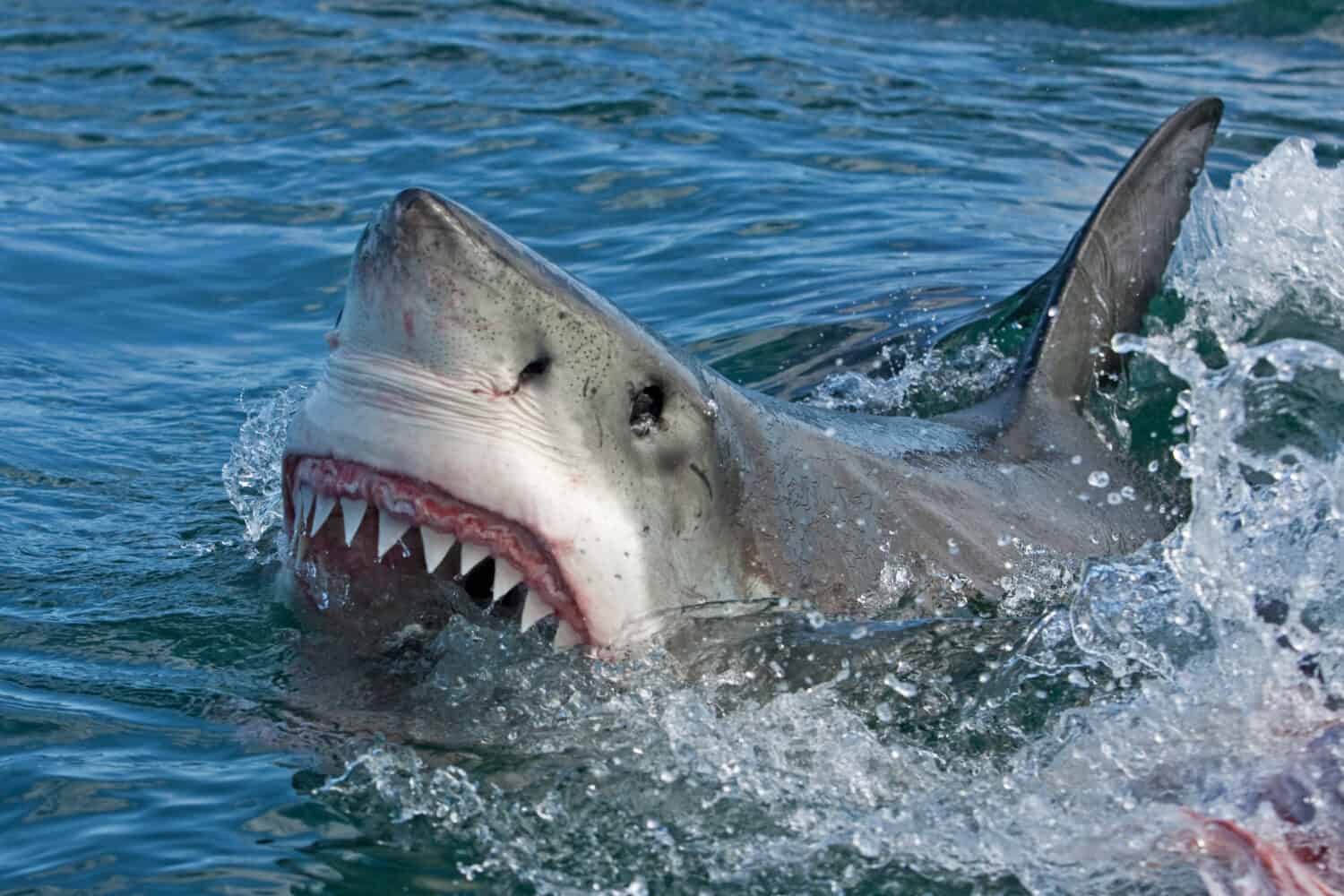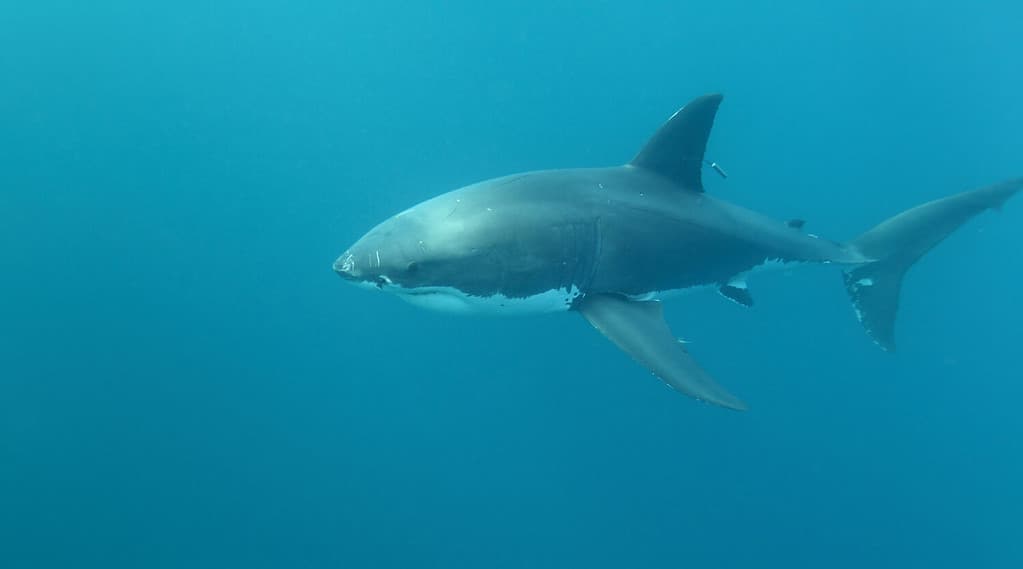Continue reading for our analysis...

To be fair to the great white shark in this clip, it did give the birds plenty of warning before it attacked. Watched by some tourists in a boat, it nudges the bird several times but the feathered friend just flutters in the air for a while and lands back on the surface of the water.
This may be because the bird is exhausted after a long flight, or it may be because there is some food in the area. If you look closely towards the end of the clip, you can see that the shark is being drawn toward the boat using a tuna tail on a piece of rope.
It appears that the shark is not happy about the competition for food and decides to remove the bird from the scene itself. Reports about the incident suggest that the shark later spat out the bird so perhaps it would’ve preferred the tuna!
Do Great White Sharks Normally Eat Sea Birds?

Great white sharks are comfortable hunting near the surface.
©iStock.com/Alessandro De Maddalena
The diet of a great white shark changes as it grows and reaches maturity. Young sharks usually feed on squid and stingrays, but they will also eat smaller sharks. As they get older, they switch to hunting seals, dolphins, and sea lions. However, they can often be seen scavenging on whale carcasses. We know that great whites will also eat turtles and they will certainly eat seabirds if they get an opportunity.
Typically, the sharks hunt by positioning themselves below the prey and accelerating vertically to attack. They also collide with the prey on purpose to stun it. The stricken prey animal usually dies from blood loss following massive injuries.
As apex predators in their ecosystems, they have little to fear from other animals. Humans, however, hunt great white sharks for sport or to use their body parts. The trade-in of shark fins is on the increase.
Where Do Great White Sharks Normally Live?

Great whites spend most of their lives in coastal and offshore waters.
©Alessandro De Maddalena/Shutterstock.com
This footage was captured in South Australia but these sharks have a very wide geographic range. They are found in cold temperate and tropical coastal waters from California to the western cape of South Africa. Great whites are also seen as far north as Alaska.
They spend most of their time in coastal and offshore habitats around continental shelves. In terms of depth, as you see in this clip they are comfortable at the surface but have also been found at depths of 6,000 feet!
Thank you for reading! Have some feedback for us? Contact the AZ Animals editorial team.







